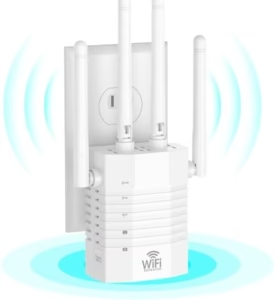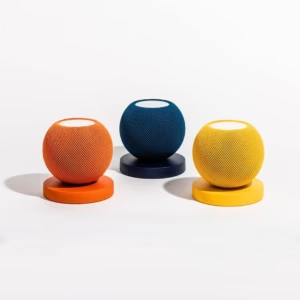Introduction
Smart homes should be simple. Customers should be free to combine various devices because interoperability should not be an issue. The scenario does not always apply as expected. Companies restrict their customer base into individual systems, which hampers compatibility between different brands.
What Is Cross-Brand Integration in Home Automation?
Home automation systems that enable different company devices to collaborate with each other are classified as cross-brand integrated. Smart devices produced by different brands allow users to operate multiple devices under a single control interface.
Users benefit from this feature because it enables one-stop management of their assortment of smart home devices.Multiple home devices such as lights, door locks, cameras, and speakers can be connected under the framework of cross-brand integration.
Users can manage their devices through one control center, either via smart home hubs or voice controllers that operate as Alexa or Google Assistant. Smart devices can offer more practical use because they can connect automatically to achieve better automated capabilities.
Why Is Cross-Brand Compatibility Important?
Different people purchase smart gadgets separately while picking their preferred products between brands because of price point and capability specifications and market availability. The inability of these devices to operate together creates an annoying user experience.
A smart doorbell becomes impossible to connect with your smart display, and security cameras cannot communicate with your home automation system. The absence of device interoperability becomes a hindrance that transforms a smart system from simple to hard to use.
Cross-brand compatible devices overcome such problems through their capability to let different brand devices connect together. Your smart lighting, together with the thermostat, along with security cameras and additional devices, will operate as one integrated system.
Overseeing your departure from home, a smart system operates to perform a coordinated action of switching off lights alongside thermostat adjustments and door locking.
Biggest Challenges in Making Different Brands Work Together
Excellent home devices use multiple proprietary brands which do not automatically connect with each other. Users experience hurdles in constructing an interconnected smart home system because different brands have separate communication standards.
Multiple issues arise when trying to make different brands work together due to the following significant complications:
Different Communication Protocols
Smart devices need various communication protocols to establish inter-device interaction. Different brands employ communication systems that include Zigbee and Z-Wave among Wi-Fi and Bluetooth.
Each technological system operates independently from other systems, resulting in connection issues when users try to join devices.
Proprietary Systems
Multiple organizations create products that operate exclusively in their built environments. Different brand smart door locks operate independently from smart light devices produced by alternative manufacturers.
Manufacturers restrict customer usage of multiple systems by designing their products as proprietary systems while achieving customer retention through product monopolies.
Inconsistent Updates
Some smart devices get updated software every now and then, although others remain without updates. The failure of a brand to update its software against another brand that does may create operational issues between connected devices.
Smooth operation of home automation systems remains an unmet expectation by smart home users during their experience.
Cloud vs. Local Control
Smart home devices operate either through cloud-based processing of commands or by performing their operations independently within residential settings. The devices that require internet service might fail to connect with ones that do not need internet, therefore creating communication problems.
A delay or complete breakdown of automation occurs because of this issue.User experience is affected negatively when different home devices function independently of one another.
Users experience smooth operating conditions when their smart home devices operate smoothly regardless of device manufacturer. Users can establish home automation by giving a single instruction to operate various devices regardless of individual brand identity.
Popular Smart Home Hubs
Popular smart home hubs available currently on the market consist of:
- Amazon Echo: serves as a smart home hub since it includes Zigbee functionality to enable multiple devices to interact without the need for additional gear.
- Using Samsung SmartThings: users can manage different smart device protocols through a single application interface.
- The Hubitat Elevation: acts as a local processing device, so it works independently from the internet connection.
- Home Assistant: stands as an open-source system designed to provide advanced users with complete control over their complete smart home applications.
The Improper Integration of Brands Between Devices
The improper integration of brands between devices causes users to repeatedly switch between different apps or hubs or voice assistants to manage their equipment. Smart home control becomes inconvenient because of separate management software between brands.
The Protocols Which Let Brands Establish Integrated Home Automation Systems
Organizations developed selected technologies which assist smart devices to interact with different brands successfully. These include:
Matter
Even Apple and Google and Amazon provide their support to Matter, which stands as a new smart home standard. This standard ensures that smart devices linking with other brands become possible despite their origin makers.
Zigbee
Different smart home brands rely on Zigbee as their selection of wireless connectivity technology. Different devices establish efficient communication along with minimal power usage through this system.
Z-Wave
The Z-Wave standard functions identically to Zigbee, although it operates on a separate frequency range. This protocol acts as a popular communicative option to join smart devices regardless of brand differences.
Wi-Fi & Bluetooth
The majority of smart devices depend on Wi-Fi and Bluetooth for functional communication. The integration between Wi-Fi and Bluetooth devices becomes unsuccessful regarding their interactions with Z-Wave or Zigbee devices, thus causing compatibility issues.
How APIs and SDKs Help Developers Connect Different Brands
Different brands which manufacture smart home devices require a system to enable intercommunication between their products. Through API (Application Programming Interface) and SDK (Software Development Kit) technology, developers execute device-to-device connectors.

Role of APIs in Smart Home Integration
An API offers systems functionality to exchange data between separate programs. By using its API, a smart thermostat enables outside weather information to be translated into automatic temperature adjustments through other apps. An API technology enables the combination of devices produced by various brands.
Framework Development Kits
Framework Development Kits serve developers through programmable tools for application and program construction.
An SDK released by a company for smart devices enables developers to produce applications capable of managing those devices. SDK provides useful capabilities for cross-brand integration because it enables smart home platforms to support additional products.
Role of Smart Home Hubs in Cross-Brand Communication
A smart home hub operates as a device which enables distinct smart gadgets to communicate through their respective Zigbee and Z-Wave and Wi-Fi protocols. Users sometimes require various specific apps for their devices when they don’t use a hub, thus creating difficulties in their setup.

Cloud-Based vs. Local (Hub-Based) Integrations
The two primary connection methods for smart devices include utilizing dedicated local processing hubs as well as remote cloud networks. Smart home methods present advantages and disadvantages to their users.
Cloud-Based Integration
Devices operating through the cloud perform their inter-device communication through internet pathways.
A smart light requires first sending data to its associated manufacturer server prior to accepting voice assistance commands. The remote control capability of this setup reaches anywhere but becomes unreliable or slow when internet connectivity fails.
Local (Hub-Based) Integration
Under this configuration, devices transmit data to each other through the hub without depending on internet access. The execution of all system functions within the home network creates faster and more reliable operations.
Smart devices using Z-Wave hubs remain functional and responsive even when the internet service becomes unavailable.
Security Risks of Cross-Brand Integration
Security risks become elevated when you join smart home devices constructed by multiple brands. Security standards in different brands differ widely between strong and nonexistent measures. A device with inferior security enables hackers entry to take control.
Your complete smart home faces potential risk because of such security breaches.The main security problem occurs because many devices employ insufficient encryption methods.
Encryption protects data through a method which allows designated devices alone to understand the contents. Weak encryption on smart devices allows hackers to acquire device information and access full control of the device system.
Achieve Smart Home Safety Through These Safety Steps
- Strong passwords: should be used because plain choices like “123456” or “password” should be avoided. Develop complex password combinations that should differ between every smart device in your system.
- Two-factor authentication (2FA): enables access security by demanding a code from your phone or email during login.
- Devices need firmware updates: for security issue fixes since they serve to eliminate these problems. Running smart device updates at the moment of their release is crucial.
- Unknown brands: violate proper security procedures while operating in the market. Investigate product brands completely prior to any purchase.
Checking Compatibility of Smart Devices Starts with This Process
You need to confirm the compatibility of your smart home device before purchasing it to work with your existing system. Devices operate using specific technologies that limit their ability to pair with one another.
Here are some easy ways to check compatibility:
- Look for labels on the packaging – Many devices come with labels like “Works with Alexa”, “Google Home Compatible”, or “Zigbee Certified”. These labels indicate which systems the device supports.
- Visit the brand’s website – Most smart home brands have a list of supported integrations on their website. This can help you confirm whether a device will work with your existing setup.
- Read user reviews – Other buyers often share their experiences. If many people say a device does not connect properly, it might not be the right choice for your smart home.

Best Platforms and Hubs for Managing a Cross-Brand Smart Home
Some platforms make it easier to integrate multiple brands:
- Amazon Alexa – Works with many smart devices.
- Google Home – Supports a wide range of brands.
- Apple HomeKit – Best for Apple users.
- Home Assistant – Great for those who want full control over integrations.
What to Do If Two Brands Claim Compatibility but Don’t Work Together
Sometimes, a smart device says it is compatible with another brand, but when you try to connect them, they do not work. This can be frustrating, but there are several steps you can take to fix the problem.
Restart Devices and Check for Firmware Updates
The first thing you should try is restarting both devices. Turn them off, wait a few seconds, and turn them back on. This can fix minor connection problems.
Next, check if there are any firmware updates available for your devices. Firmware is the software inside your smart devices, and updates often fix bugs and improve compatibility. You can usually find updates in the device’s app or on the manufacturer’s website.
Try Different Connection Methods
Smart home devices can connect in different ways, such as Wi-Fi, Zigbee, or Z-Wave. If one method does not work, try another if possible. For example, if a smart light is not connecting through Wi-Fi, check if it supports Zigbee and try using a Zigbee hub.
Use a Hub or Third-Party Service
A smart home hub can act as a bridge between different brands. If two devices are not working together, connecting them through a hub like Samsung SmartThings, Hubitat, or Home Assistant may help.
Another option is to use a third-party service like IFTTT (If This Then That). IFTTT lets you create custom automation between devices that do not natively support each other.
For example, if your smart lock and smart lights do not connect directly, you can set up an IFTTT rule to turn on the lights when the lock is activated.
Contact Customer Support or Check Online Forums
If nothing else works, reach out to customer support for the brands you are trying to connect. They may have specific troubleshooting steps or updates that can fix the issue.
You can also check online forums like Reddit, SmartThings Community, or manufacturer support pages. Other users may have faced the same problem and found a solution.
Conclusion
Cross-brand integration makes smart homes more flexible. While challenges exist, using the right protocols, hubs, and platforms can create a smooth experience. Before buying new devices, check compatibility to avoid frustration. A truly smart home should let all devices work together, no matter the brand.
Frequently Asked Questions
What is cross-brand smart home integration?
Cross-brand integration allows devices from different manufacturers to work together seamlessly in a smart home setup.
Why is cross-brand compatibility important?
It provides flexibility, prevents vendor lock-in, and ensures users can mix and match devices based on their needs.
What are the biggest challenges in cross-brand integration?
Differences in communication protocols, lack of standardization, and limited API support are common challenges.
Which protocols help with cross-brand integration?
Zigbee, Z-Wave, Matter, and Wi-Fi are popular protocols that enable cross-brand compatibility.
What is Matter, and how does it improve compatibility?
Matter is a universal smart home standard designed to improve cross-brand communication by offering a common connectivity protocol.
Do all smart home devices support cross-brand integration?
No, some brands create closed ecosystems that only work within their product line.
Can I integrate Apple HomeKit, Google Home, and Amazon Alexa devices?
Yes, many devices support multiple ecosystems, but you should check for compatibility before purchasing.
How do smart home hubs help with cross-brand integration?
Hubs act as a bridge between devices using different protocols, enabling them to communicate.
Do I need a hub for cross-brand integration?
Not always. Some devices work via cloud-based APIs or direct Wi-Fi connections.
What are cloud-based vs. hub-based integrations?
Cloud-based integrations rely on internet services, while hub-based ones operate locally for faster and more reliable performance.
How do APIs improve cross-brand compatibility?
APIs allow developers to create integrations between different platforms, enabling devices to work together.
Can I automate cross-brand devices without a central hub?
Yes, using platforms like IFTTT or Home Assistant, you can automate actions between different brands.
Which smart home platforms support the most cross-brand devices?
Home Assistant, SmartThings, and Hubitat are popular choices for broad device compatibility.
What are the risks of using multiple brands in a smart home?
Potential risks include inconsistent performance, security vulnerabilities, and lack of long-term support.
Can cross-brand integration impact security?
Yes, using multiple brands increases exposure to different security standards, which may lead to vulnerabilities.
How do voice assistants handle cross-brand integration?
Assistants like Alexa, Google Assistant, and Siri use cloud services to control multiple brands through a single interface.
What is the best way to check if devices are cross-brand compatible?
Look for compatibility labels (e.g., “Works with Alexa” or “Matter-certified”) and check manufacturer documentation.
Are smart plugs a good solution for integrating non-smart devices?
Yes, smart plugs can enable automation and remote control for basic electrical devices.
How can I future-proof my smart home setup?
Choose devices that support open standards like Matter, Zigbee, or Z-Wave for long-term compatibility.
Will cross-brand integration get easier in the future?
Yes, with Matter and improved industry standards, cross-brand compatibility is expected to become more seamless.





